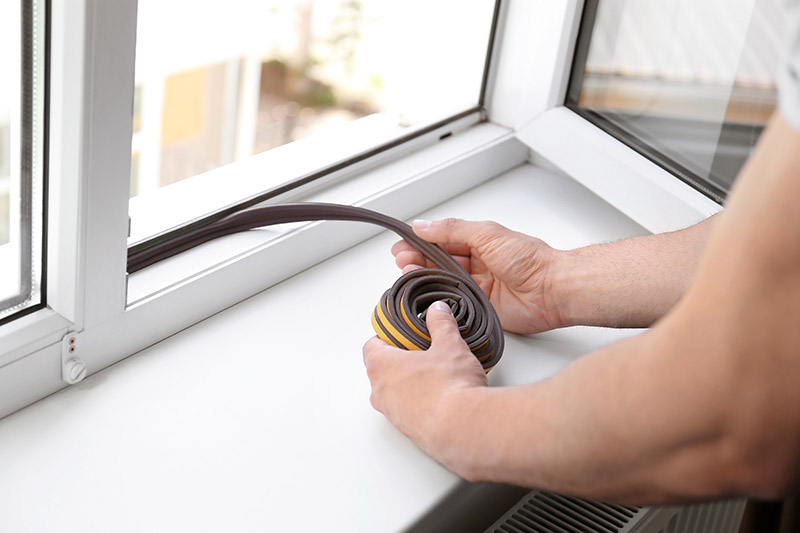A seal helps prevent drafts and allows the house to maintain a comfortable temperature. It also keeps moisture, bugs, and allergens out.
For a simple and inexpensive solution, caulk can help seal the perimeter where the window frame meets the wall or windowsill. Silicone caulks offer more long-lasting stretch and better resistance to seasonal expansion and contraction.
Energy Efficiency
Window seals keep outside air out during the cold months to make homes and offices more energy-efficient. They are also vital in preventing drafts through the sides of windows.
Unwanted drafts come from cracks and gaps often found in window frames. These drafts require your heating and cooling system to work harder, increasing energy costs.
There are many options to choose from for window sealing. Popular options include foam tapes and self-adhesive strips, which are easy to apply. Tubular vinyl is inexpensive, simple to cut with scissors, and can be used to fill irregular gaps. Other options for window sealing are V-strips made of vinyl that fold along their length or metal spring bronze, which can be cut with tin snips to size and nailed into place.
Reduced Noise
In addition to saving energy, windows sealed with good quality weatherseal reduce noise. They keep the outside noise out and make your home more comfortable. It also makes it harder for creepy crawlies to get inside.
Window seals that are no longer working well cause drafts, which make it hard for your heating and cooling systems to regulate the preferred temperature in your home. This puts additional strain on the design and can result in higher energy costs.
Felt strips are an old-fashioned but still effective method for sealing windows. These can be nailed in place, or you can purchase adhesive-backed felt tape. Other window seals include rubber door sweeps, which can be nailed in or used with adhesive. A vinyl V-strip is another option for the same purpose, as are self-adhesive caps that cover pulleys and prevent drafts.
Reduced Moisture
Whether in a humid climate or not, your windows allow moisture into your home. The smallest gap between the window frame and wall or between the frame and sill lets air in and out, which also lets in humidity.
When warm indoor air meets cool glass surfaces, moisture that cannot be held by the interior water vapor condenses and lands on the surface. This often happens in spring, summer, and fall when cool nights follow warm days.
If you find that window glazing putty has begun to crumble or peel, add a self-stick V-strip or adhesive foam. Clean the stops, cut strips or foam to size, and then stick them in place.
Reduced Allergens
There are several ways you can reduce allergens in your home. You can keep the air conditioning running to prevent pollen from being blown indoors, have family members take off their shoes at the door and place a high-quality mat at the front, and invest in new windows that seal out drafts and help you breathe easier.
But if your windows aren’t sealed, all these other steps you may be taking could be for nothing. Cracked windows let in allergens like mold spores, dust mites, and pet dander. These can cause breathing problems and trigger allergies in those with respiratory issues. Window weather seals will eliminate this problem and make your home more comfortable for allergy sufferers. They will also save you money by reducing the amount of allergens entering your home.
Reduced Damage
Window seals don’t have an indefinite life expectancy and will eventually wear down to the point that they need to be repaired or replaced. When these seals are damaged, drafts and other environmental elements can enter your home, causing your heating and cooling systems to work harder, leading to higher energy bills.
Additionally, moisture around windows is a breeding ground for mold, which can harm people and pets living in the home. Window seals must be adequately cared for to extend their lifespan and ensure they function optimally.
There are many options for window weather seals that you can choose from. Foam and self-adhesive V-strip tape is an inexpensive option that works well. For a long-term solution, try spring bronze, which can be cut with tin snips to fit your windows precisely and have a pleasing look.








